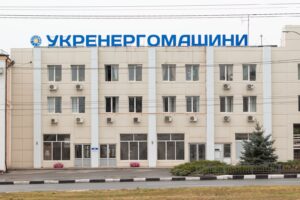
In January-September of this year, Ukraine increased imports of aluminum ore and concentrate (bauxite) in physical terms by 39.4% compared to the same period last year, to 27,219 thousand tons.
According to statistics released by the State Customs Service (SCS), during this period, bauxite imports in monetary terms increased by 24.1% to $3.021 million.
At the same time, imports were mainly from Turkey (81.98% of supplies in monetary terms), China (17.16%), and Guyana (0.86%).
Ukraine did not re-export bauxite in 2025, as in 2024 and 2023.
As reported, in 2024, Ukraine increased its imports of bauxite in physical terms by 77.4% compared to 2023, to 35,173 thousand tons, and in monetary terms by 74%, to $4.107 million. Imports were mainly from Turkey (78.48% of supplies in monetary terms), China (19.48%), and Spain (1.9%).
In 2023, Ukraine imported 19,830 thousand tons of bauxite worth $2.360 million.
In 2022, Ukraine reduced imports of aluminum ores and concentrates (bauxite) in physical terms by 81.5% compared to the previous year, to 945,396 thousand tons. Bauxite imports in monetary terms decreased by 79.6% to $48.166 million. Imports were mainly from Guinea (58.90% of supplies in monetary terms), Brazil (27.19%), and Ghana (7.48%).
Bauxite is an aluminum ore used as a raw material for producing alumina, which is then used to produce aluminum. It is also used as a flux in ferrous metallurgy.
Bauxite is imported into Ukraine by the Mykolaiv Alumina Plant (MAP).

JSC Ukrenergomashiny (Kharkiv) ended January-June of this year with a net profit of UAH 0.49 million, compared to UAH 20.81 million for the same period last year.
According to the company’s financial report on its website, net income decreased slightly, by 3.4%, to UAH 468.85 million.
The company received UAH 13.84 million in operating profit (three times less), and gross profit exceeded last year’s figure by 20.2%, amounting to UAH 140.68 million.
As reported, in the first quarter of this year, UkrEnergoMashyn’s net profit increased by 35% compared to January-March 2024, to UAH 0.25 million, with net income growing by 23.4% to UAH 225.3 million.
Thus, in the second quarter, the plant received UAH 0.24 million in net profit (in April-June 2024 – UAH 20.62 million), while net income decreased by 19.5% to UAH 243.55 million.
JSC Ukrenergomashiny, more than 75.22% of whose shares are owned by the state, is the only manufacturer of turbine equipment for hydro, thermal, and nuclear power plants in Ukraine. It also produces electric motors for rail and urban transport.
According to the company’s annual report, in 2024, it more than doubled its net income to almost UAH 799 million and received UAH 0.88 million in net profit compared to UAH 0.2 million in 2023.
As reported, according to the decision of the shareholders, from October 1 to October 28 of this year, Ukrenergomashiny will pay dividends for 2024 in the amount of UAH 660,660 (75% of the net profit received) at the rate of UAH 0.00156 per share with a par value of UAH 0.25.
The average number of employees in 2024 was 2,739 thousand people (3,492 thousand in 2023).

Law enforcers in Odessa exposed a criminal group, which realized a large-scale fraudulent scheme with the use of fictitious investment platforms, reports the press service of the National police of Ukraine.
“Attackers created websites of non-existent companies, whose names were periodically changed in order to conspire criminal activity, where they placed false information about allegedly entrepreneurial activities in the field of arbitrage advertising traffic and cryptocurrency assets. Potential investors were offered to register personal accounts, where they could choose a certain investment plan, fund their accounts and “receive dividends”. In reality, the funds were immediately accumulated on the controlled crypto wallets of the participants of the fraudulent scheme. Having reached the goal, they stopped communication with the victims”, – is indicated in the message.
According to the investigation, organized “business” 28-year-old resident of Odessa, attracting to its implementation a group of persons, including a specialist in the IT-sector, which created and administered the websites of fictitious companies, as well as “callers” who contacted potential victims. The participants worked both remotely and from specially equipped offices in Odessa, which functioned as call centers.
Law enforcers established a cryptocurrency wallet controlled by the attackers, the total amount of proceeds to which exceeded UAH 24 million in 2024-2025. For conspiracy, the figures controlled it from a private key, which did not belong to any known service or exchange.
“According to preliminary data, the actual number of victims, including foreigners, may exceed 1,500 people, to establish which it is necessary to conduct a number of investigative actions, including in the framework of international cooperation,” – said the police.
To solve the crime, a joint investigative team between the competent authorities of Ukraine and the Republic of Kazakhstan has been created. With the involvement of special units of the NPU, GUNP in Odessa region and employees of the Department of cyberpolice of the Republic of Kazakhstan was conducted a number of searches and seized a number of evidence of illegal activities.
So far, the police have documented illegal activities of the group’s members against seven investors from Ukraine, Kazakhstan, Armenia, Kyrgyzstan and other countries. The damage caused to the investors amounts to $92 thousand.
Investigators detained eight members of the group, another one is wanted. In the presence of sufficient evidence, all the defendants are reported on suspicion of taking possession of other people’s property by deception, i.e. fraud, committed by prior conspiracy of a group of persons, through illegal operations with the use of electronic computers, under martial law, in especially large amounts.
According to the sanction of part 5 of article 190 (fraud) of the Criminal Code of Ukraine, the perpetrators face up to 12 years of imprisonment with confiscation of property.

Cocoa futures prices have fallen to 20-month lows, dropping by about half compared to recent peaks.
The most active cocoa bean futures contract in New York fell to $6,150 per tonne during the session. Last December, the contract traded above $12,000.
In London, cocoa futures are trading at £4,262 ($5,713) per ton, down 58% from the multi-year highs seen last April.
The decline in cocoa prices was the result of a reduction in consumer demand, which, in turn, was caused by a sharp increase in prices in recent years, the Financial Times writes, citing analysts. In addition, experts expect a good harvest of cocoa beans in the largest producing countries located in West Africa.
“Prices rose to crazy heights and could not remain at such levels for long,” said Rabobank analyst Oran van Dort. “Quotations have been falling for most of this year, but a particularly pronounced downward trend has been observed since mid-August.”

In Uzbekistan, 2,141 positions in the executive branch will be cut by November 1, 2025, due to the introduction of artificial intelligence technologies. The corresponding decree was signed by the country’s president, Shavkat Mirziyoyev, and the document was published in the National Legislation Database.
According to the decree, the largest number of cuts will occur in the State Tax Committee (498 positions), the Ministry of Water Resources (224), the Ministry of Agriculture (200), the Ministry of Justice (197), the Ministry of Ecology (176), and the Ministry of Employment and Poverty Reduction (163).
In addition, the number of deputy heads in state committees, agencies, and inspectorates will be reduced: in some structures, the number of deputies will decrease from 11 to 7, from 12 to 6, and from 13 to 7, respectively.
The Ministry of Employment and the Federation of Trade Unions have been instructed to assist dismissed employees in finding employment and retraining.
The reform is part of a program to digitally transform public administration. In early 2025, President Mirziyoyev signed a law reforming the civil service system, which provides for the introduction of performance evaluations for civil servants and higher requirements for digital skills.
Earlier, Uzbekistan announced the creation of an Artificial Intelligence Development Alliance, which will coordinate the introduction of AI technologies in various industries and allocate funding for infrastructure development. About $100 million is planned to be allocated for these purposes.
The mass reduction of civil servants reflects the authorities’ policy of optimizing the bureaucratic apparatus and improving management efficiency through digitalization. At the same time, experts note that the success of the reform will depend on the quality of the technologies implemented and the state’s ability to provide social protection and retraining for the workers who are being laid off.